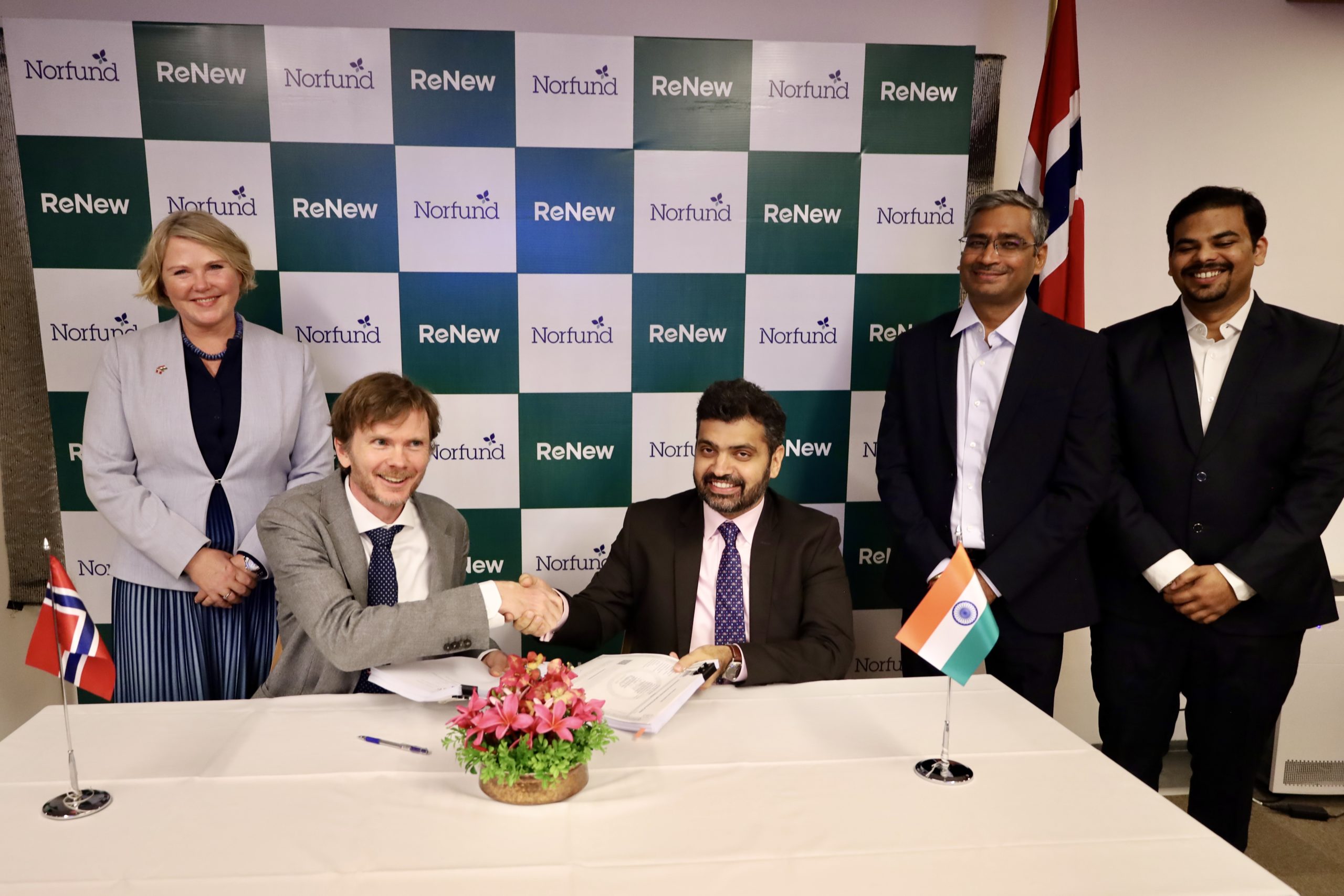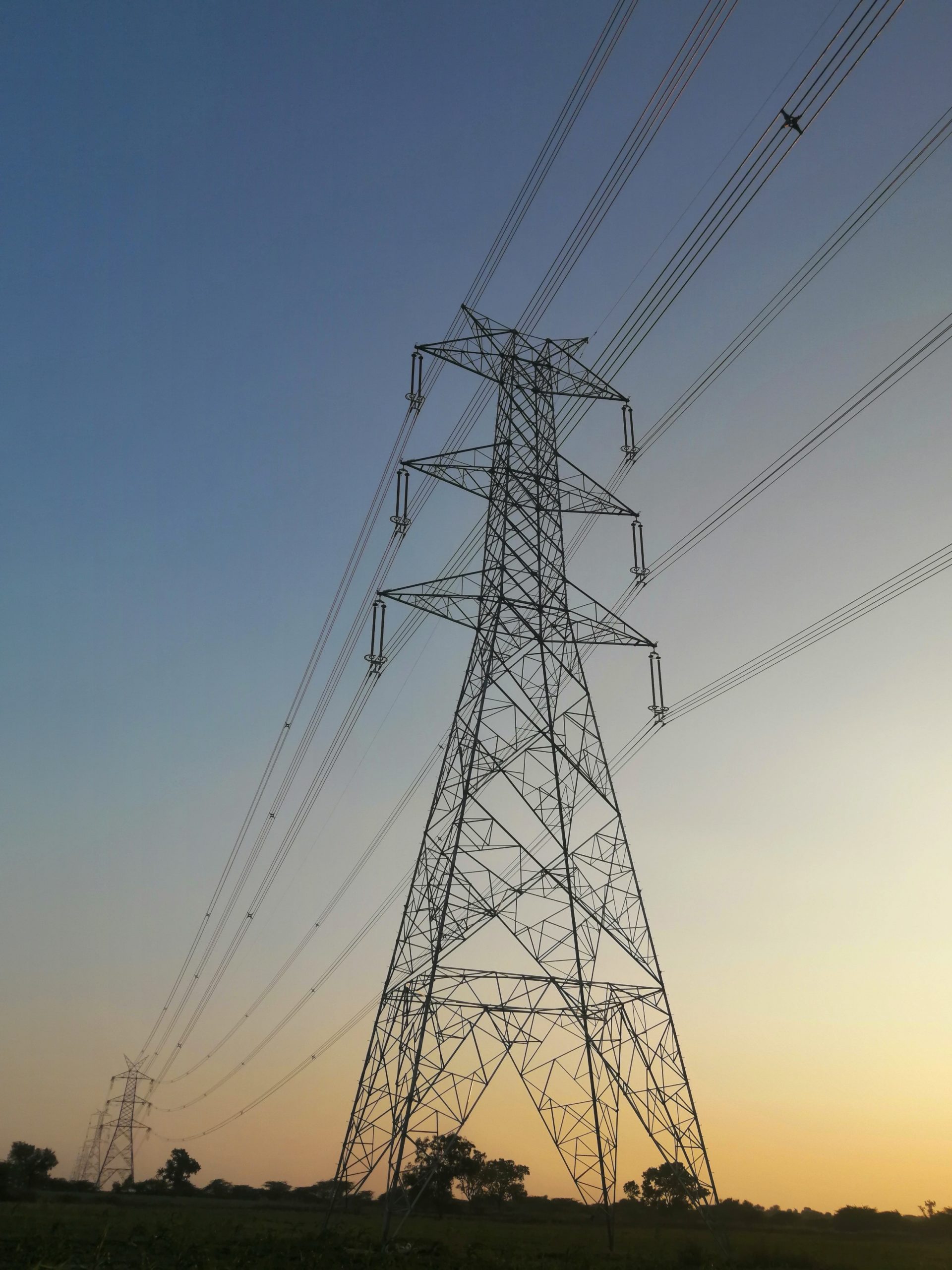November 16, 2023
The Climate Investment Fund and KLP are investing in the development of 144 km of high-voltage lines to connect 2.5 GW of solar and wind power in India. By replacing planned and existing coal power, it will avoid 5.2 million tons of CO2 — equivalent to 10% of Norwegian emissions. For every rupee invested by Norfund, 15 rupees are mobilized from private capital.

The agreement with the Indian developer ReNew is signed in connection with Minister of International Development Anne Beathe Tvinnereim’s visit to India. During her trip Tvinnereim also visits SAEL, a company pioneering in bioenergy development. SAEL’s innovative method utilizes straw, currently being burned in fields, for energy production. This not only reduces greenhouse gas emissions, but also mitigates local air pollution.

“To secure the necessary investments for the vital energy transition, public funding must mobilize private capital. The signing between the Climate Investment Fund, ReNew and KLP is a great example of this. It also shows how Norwegian investments are helping India reach its goals of installing 500 GW of non-fossil capacity by 2030”
Anne BeatHe Tvinnereim, Minister of international development
Solar and wind energy are geographically dispersed resources and require significant investment in power lines to transfer the power from the areas most suitable for solar and wind farms to where the power is needed and balance the grid.
In partnership with the Indian company ReNew Power, the Climate Investment Fund, managed by Norfund, and KLP, Norway’s largest pension company, are now investing up to 760 million rupees (102 million NOK) in a 49% share in a project in Gadag, Karnataka, Southern India. The project consists of the development of a new transformer station and 144 km of high-voltage lines (400 kV).
“Through the investment, we are helping to connect 2.5 GW of planned expanded solar and wind power in the south of the country to the national grid”, says Bjørnar Baugerud, head of Norfund’s Climate Investment Fund.
The connected projects will produce approximately 6,300 GWh, which results in avoided emissions of 5.2 million tons per year. This corresponds to 10.6% of Norway’s annual emissions – or emissions from 2.7 million Norwegian petrol cars.
Enormous financing needs require the mobilization of private capital
India is the world’s second largest producer of coal-fired power, and with the world’s largest growth in energy demand, the country must, according to the IEA, increase its energy production in the next 20 years by as much as the entire EU produces today. In 2022 India increased coal power generation by 12.4%, and emissions from power generation rose by almost a sixth, to 1.15 billion tons, according to a Reuters analysis.
Last Monday, the Indian energy minister announced that the country is planning for an additional 30 GW of new coal power, in addition to the 50 GW that are all on the way, to avoid power shortages. For comparison, total capacity for Norwegian hydropower is 33 GW.
If the country is to base its growth on renewable energy, a lot of capital is required: BloombergNEF has calculated that India needs $233 billion in investment just to meet the government’s wind and solar energy targets by 2030.
“The needs are enormous. And we can only meet those needs if we use public capital to mobilize private capital. We are now doing that through the Climate Investment Fund”, says Tvinnereim.
When Norfund gets KLP on the ownership side of the project together with the Indian developer ReNew, the project also gets access to loans from private banks. This means that for every rupee Norfund invests in the project, 15 rupees are mobilized in private capital.

The climate investment fund was the most important contributor to Norway reaching the government’s goal of doubling total Norwegian climate financing compared to 2020 already last year, when the fund’s investments of NOK 2.1 billion mobilized a total of NOK 5.68 billion in private climate financing.
The fund’s investments in new renewable energy in 2022 will help to avoid emissions of 6.2 million tons of CO2e per year — equivalent to 13% of Norway’s annual emissions.
“KLP is pleased to increase our climate investments in India. We expect that the project will both have a significant climate effect and provide a stable and predictable return for KLP’s owners“
Eric Nasby, investment analyst at KLP
Need 300 billion for investments in the power grid
India has previously launched plans for half of the country’s energy to be renewable by 2030. In the government’s plans to invest in upgrading the power grid, it is planned to increase the capacity for transmission between the regions from 112 GW to 150 GW by 2030, which alone will require total investments of NOK 300 billion.
In the new plan from the Indian government, part of the need to stabilize the grid is also planned to be covered by batteries, with plans for 54.5 GW of storage by 2030. However, such investments require a lot of capital.
“There are a number of larger hybrid projects that combine solar, wind and battery storage in India that need financing in India. Given the size of the fund, it is limited how much we can contribute to such projects as of today, but the needs and opportunities to put more money to work are great”, says Baugerud.